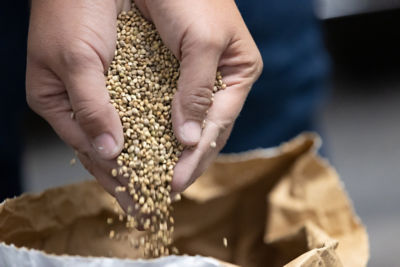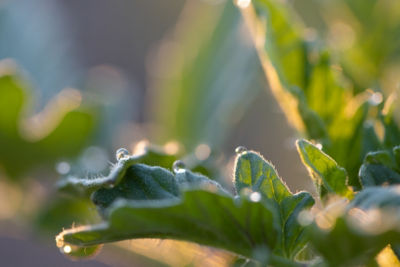Causal Agent
Verticillium albo-atrum Verticillium dahliae
Two races (1 and 2) have been reported.
Distribution
Worldwide
Symptoms
Wilting of older leaves begins at the leaflet margin and progresses into a yellow-then-brown V-shaped pattern. Older leaves eventually turnyellow and dry up. Diseased plants are stunted, do not respond to fertilizer or water and will show diurnal wiltingon sunny days. When the base of the main stem is cut, a light tan discoloration can be seen in the vascular system and across the pith at the crown. This discoloration usually does not extend far up the plant. However. under severe disease pressure, it can be found nearer the shoot tips.
 Leaflet with v-shaped lesions. (Courtesy of Gerald Holmes, California Polytechnic State University at San Luis Obispo, Bugwood.org)
Leaflet with v-shaped lesions. (Courtesy of Gerald Holmes, California Polytechnic State University at San Luis Obispo, Bugwood.org)
 Stem cross-sections showing diseased (left) and healthy (right) vascular tissue.
Stem cross-sections showing diseased (left) and healthy (right) vascular tissue.
Conditions for Development
The fungus has an extremely wide host range and can survive in the soil and plant debris as microsclerotia for several years. Disease development is favored by cooler temperatures (21-25°C, 70-77°F). The fungus can enter the plant through root wounds caused by cultivation, secondary root formation and nematode feeding.
Control
The use of resistant varieties is generally the best way to reduce losses from this disease. Soil fumigation and solar sterilization have been shown to reduce disease incidence.




